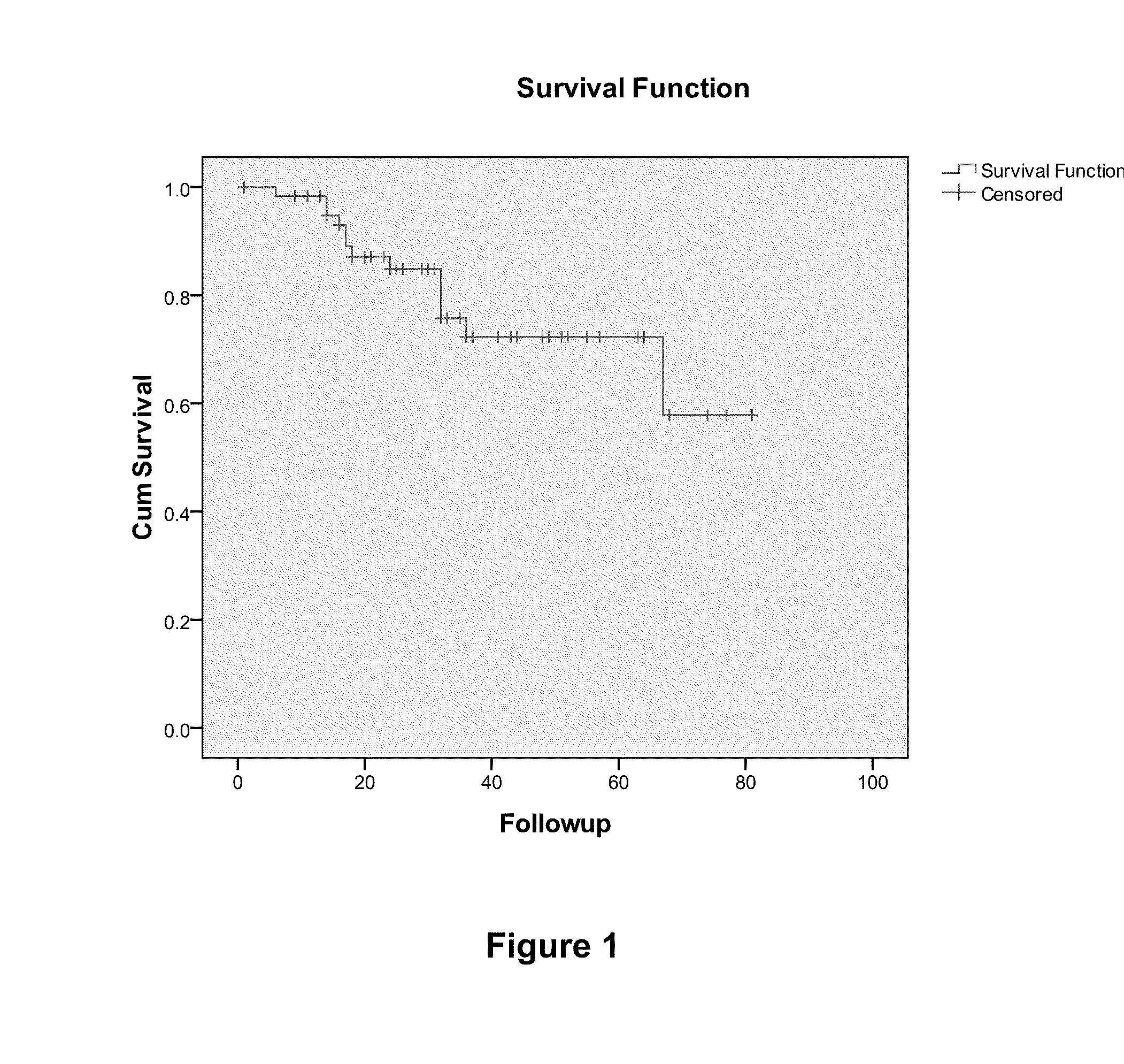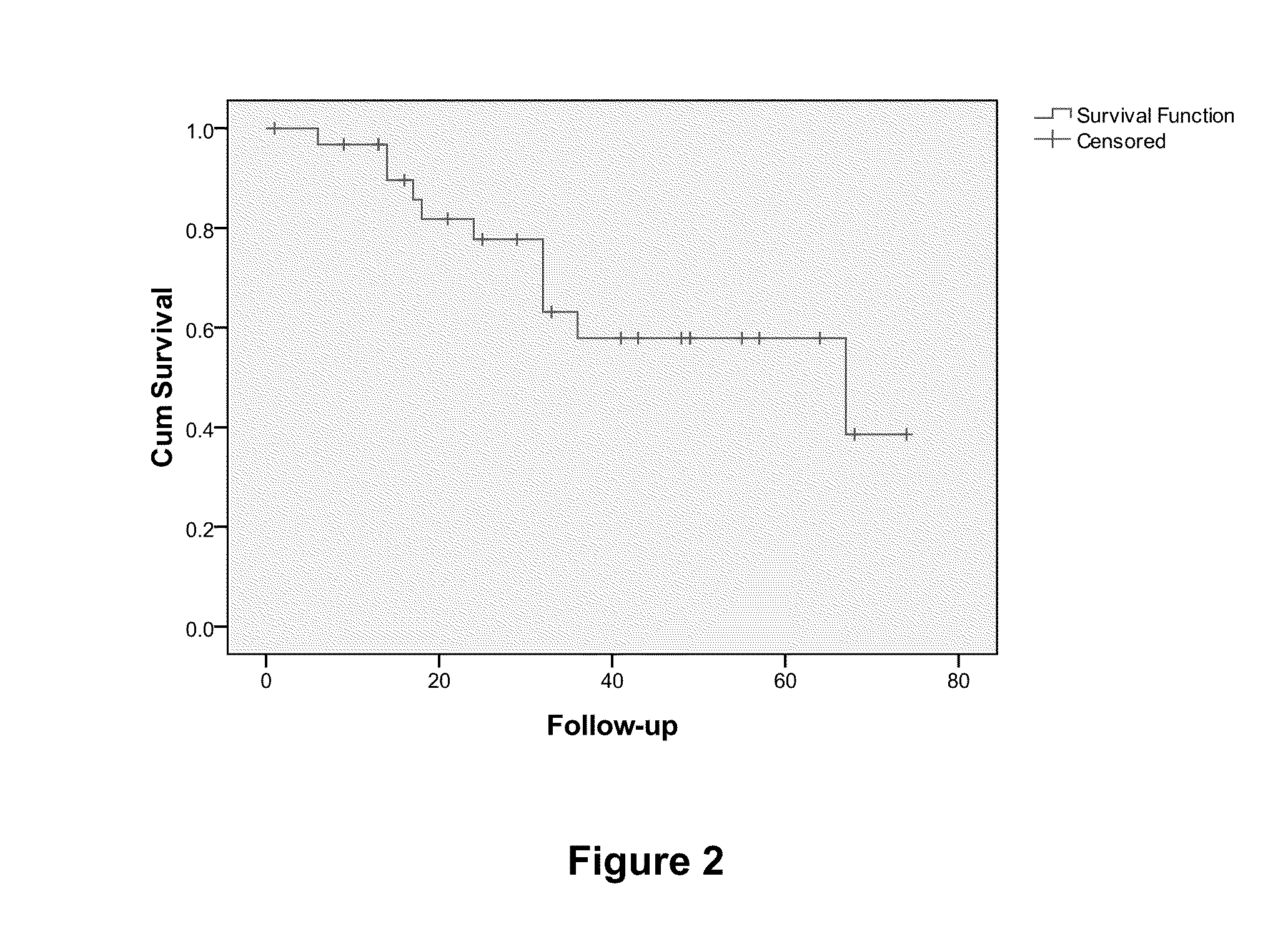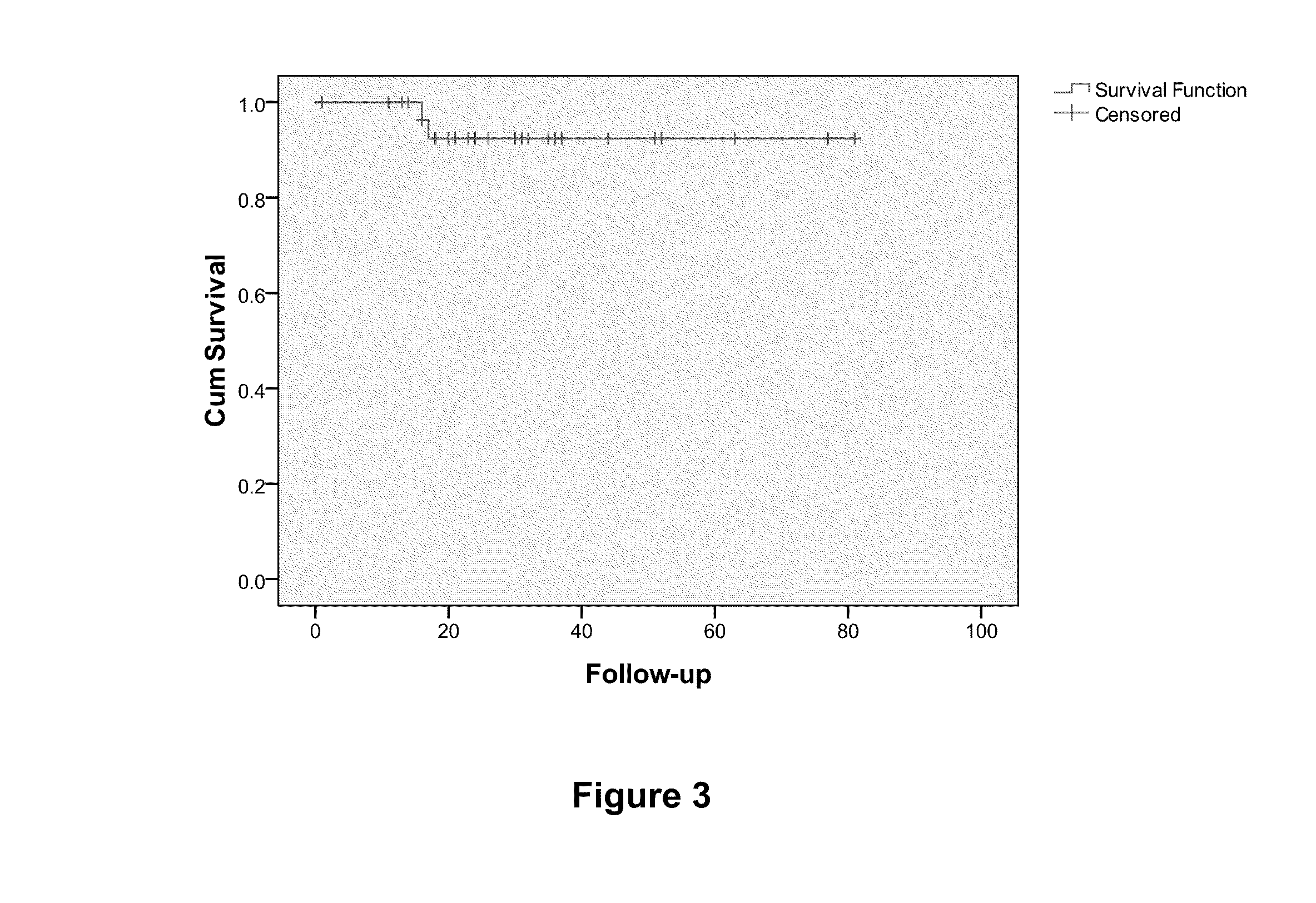Prognostic biomarkers to predict overall survival and metastatic disease in patients with triple negative breast cancer
a breast cancer and overall survival technology, applied in the field of prognostic biomarkers to predict overall survival and metastatic disease in patients with triple negative breast cancer, can solve the problems of inconvenient use, limited by requirements, and no tumor marker has all the requisite characteristics to provide enough specificity or sensitivity to be used in early diagnosis or mass cancer screening programs
- Summary
- Abstract
- Description
- Claims
- Application Information
AI Technical Summary
Benefits of technology
Problems solved by technology
Method used
Image
Examples
example 1
RNA Isolation
[0066]RNA is isolated from formalin-fixed paraffin-embedded (FFPE) tissue according to the methods described in Abramovitz et al., Biotechniques, 44 (3):417-23 (2008). In brief, three 5 m sections per block were cut and placed into a 1.5 mL sterile microfuge tube. The tissue section was deparaffinized with 100% xylene for 3 minutes at 50° C. The tissue section was centrifuged, washed twice with ethanol, and allowed to air dry. The tissue section was digested with Proteinase K for 24 hours at 50° C. RNA was isolated using an Ambion Recover All Kit® (Ambion®; Austin, Tex.).
cDNA-Mediated Annealing, Selection, Extension, and Ligation Assay (DASL® Assay)
[0067]Upon the completion of RNA isolation, the isolated RNA is used in the DASL® assay. The DASL® assay is performed according to the protocols supplied by the manufacturer (Illumina®, Inc.; San Diego, Calif.). The probe sequences for the thirty-one biomarker genes are contained within Table 1.
example 2
Identification of a 12 Gene Set that can be Used to Sub Classify TN Breast Tumors Predictors for the OS Potential of TN Breast Cancer
[0068]The predictive set of 512 genes were optimized for performance in the cDNA-mediated annealing, selection, extension, and ligation (DASL®) assay (Illumina®, Inc.; San Diego, Calif.). The DASL® assay is based upon multiplexed reverse transcription-polymerase chain reaction (RT-PCR) applied in a microarray format and enables the quantitation of expression of up to 1536 probes using RNA isolated from archived formalin-fixed paraffin embedded (FFPE) tumor tissue samples in a high throughput format (Bibikova et al., Am. J. Pathol., 165:1799-807 (2004); Fan et al., Genome Res., 14:878-85 (2004)). RNA was isolated from tumor samples from patients with TN breast cancer and was analyzed using the DASL® assay. Here, in a sample size of 63, Cox regression analysis yielded 15 probes from 12 unique genes prognostic of overall survival (FDR<5%). These genes inc...
example 3
Identification of a 4-Gene Set that can be Used as Predictors for the Metastatic Potential of TN Breast Cancer
[0071]Four probes were determined prognostic of metastatic disease, these probes map to the genes ANG, DICER1, EIF1, and MSH6. Average expression levels are graphically depicted in FIG. 4 and specific transcript sequences are contained in Table 2 (above).
[0072]Determination of Metastatic Prognostics: SEER epidemiological data contained metastatic information on 44 of the 63 TN patients. The remaining 19 patients were excluded from the metastatic analysis. Of the 44 patients with metastatic follow-up data, 6 had distant metastases. As no time to metastasis was available metastatic disease was treated as a binomial variable and expression markers were determined using a Bonferroni corrected student's t-test for heteroscedastic data (in other terms we did not make the assumption of equal variances between the two cohorts). A criterion p-value of less than 0.05 was imposed and c...
PUM
| Property | Measurement | Unit |
|---|---|---|
| time | aaaaa | aaaaa |
| time | aaaaa | aaaaa |
| affinity | aaaaa | aaaaa |
Abstract
Description
Claims
Application Information
 Login to View More
Login to View More - R&D
- Intellectual Property
- Life Sciences
- Materials
- Tech Scout
- Unparalleled Data Quality
- Higher Quality Content
- 60% Fewer Hallucinations
Browse by: Latest US Patents, China's latest patents, Technical Efficacy Thesaurus, Application Domain, Technology Topic, Popular Technical Reports.
© 2025 PatSnap. All rights reserved.Legal|Privacy policy|Modern Slavery Act Transparency Statement|Sitemap|About US| Contact US: help@patsnap.com



